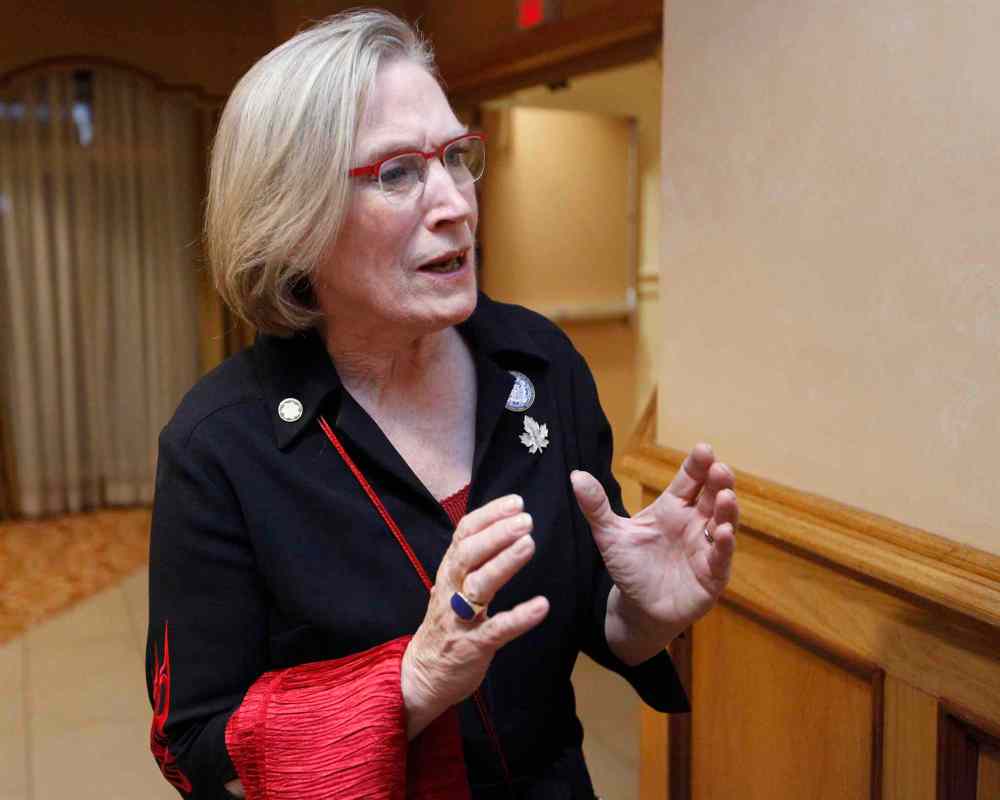Federal initiative starting to show positive outcomes
But no hard evidence of gains in province
Advertisement
Read this article for free:
or
Already have an account? Log in here »
To continue reading, please subscribe:
Monthly Digital Subscription
$1 per week for 24 weeks*
- Enjoy unlimited reading on winnipegfreepress.com
- Read the E-Edition, our digital replica newspaper
- Access News Break, our award-winning app
- Play interactive puzzles
*Billed as $4 plus GST every four weeks. Offer only available to new and qualified returning subscribers. Cancel any time.
Read unlimited articles for free today:
or
Already have an account? Log in here »
Hey there, time traveller!
This article was published 17/12/2015 (3333 days ago), so information in it may no longer be current.
OTTAWA — A federal initiative designed to reduce the number of on-reserve First Nations children from being taken into the child-welfare system has signs of success, a review of the five-year program shows.
But numbers suggest it hasn’t had a major effect in Manitoba.
In 2010, Manitoba became the sixth province to sign onto the enhanced prevention-focused approach, which allowed Ottawa to funnel more cash directly to First Nations so child-welfare agencies could develop prevention strategies to help families before their kids had to be taken away.

Under the initiative, 15 First Nations child-welfare agencies in the province were to share $177 million over five years. Prevention could include everything from respite care to addictions support, family camps, sharing circles, parenting classes and emergency financial assistance.
The initiative’s review, posted online by Indigenous and Northern Affairs Canada recently, suggests there is reason to be optimistic, citing a reduction in the number of children in care. It also says 43 per cent of Manitoba agencies cited a reduction in the number of children in care in their business plans and quotes a worker from Manitoba’s Southeast Child and Family Services as saying the new initiative was largely responsible for those reductions.
However, a source close to First Nations child-welfare agencies in Manitoba, who asked not to be identified, said the business plans were aspirational documents. If there had been a real reduction in the number of kids in care, those figures would have been all over the initiative’s review, he said. They were not.
In fact, the report provides no specific details about the number of kids in care, how much any individual agency received or what the initiative’s dollars achieved, such as number of new case workers hired for prevention programs, or the number of families who were helped instead of having their children taken away.
In Manitoba, 87 per cent of kids in care are indigenous, even though they make up just 23 per cent of the child population. Aboriginal children in Manitoba are also 19 times more likely to be taken away from their parents than non-aboriginal children. (Nationally, that figure is about 12 times.)
Provincial documents show just three of the 15 Manitoba First Nations agencies funded by the federal government had a decrease in the number of kids in care. The rest had an increase. Since the initiative was introduced five years ago, the number of children in the care of First Nations agencies is up by more than 760 kids, or more than 12 per cent. They include both kids living on and off reserve — Ottawa is only responsible for the former.
The Manitoba source said there are reasons to be optimistic about the initiative because funding for prevention is well-intentioned and necessary. But the realities of providing those services butt up against the realities of life on First Nations, where poverty, overcrowding and lack of education, health and economic opportunities are major concerns.
“As long as you have those things, it doesn’t matter how much you spend on child welfare, it will always be a Band-Aid,” he said.
Indigenous Affairs Minister Carolyn Bennett was not available for an interview about whether she thinks the initiative is working and whether it should be continued. Although the five-year agreement signed in Manitoba for the initiative expired in July, the department will continue to fund the initiative in Manitoba to the tune of $42.2 million a year for the time being.
‘We have to begin work on, and get support for, an overhaul of the child-welfare system’
— Indigenous Affairs Minister Carolyn Bennett
Last week, at the Assembly of First Nations’ special chiefs gathering, Bennett indicated child welfare was on her radar screen.
“We have to begin work on, and get support for, an overhaul of the child welfare system,” she said.
The report says the agencies liked the flexibility of the initiative, which allowed them to tailor their programs to the individual needs of communities. But it also notes that flexibility allowed agencies to take from the initiative’s funding to help pay for operational costs or foster care.
The Manitoba source said taking money targeted for prevention to pay for increased foster-care costs has been a long-standing problem and prevents adequate programs from developing.
One of the recommendations in the initiative’s review is to find ways to ensure prevention dollars are being used for prevention.
mia.rabson@freepress.mb.ca
History
Updated on Thursday, December 17, 2015 7:42 AM CST: Replaces photo

